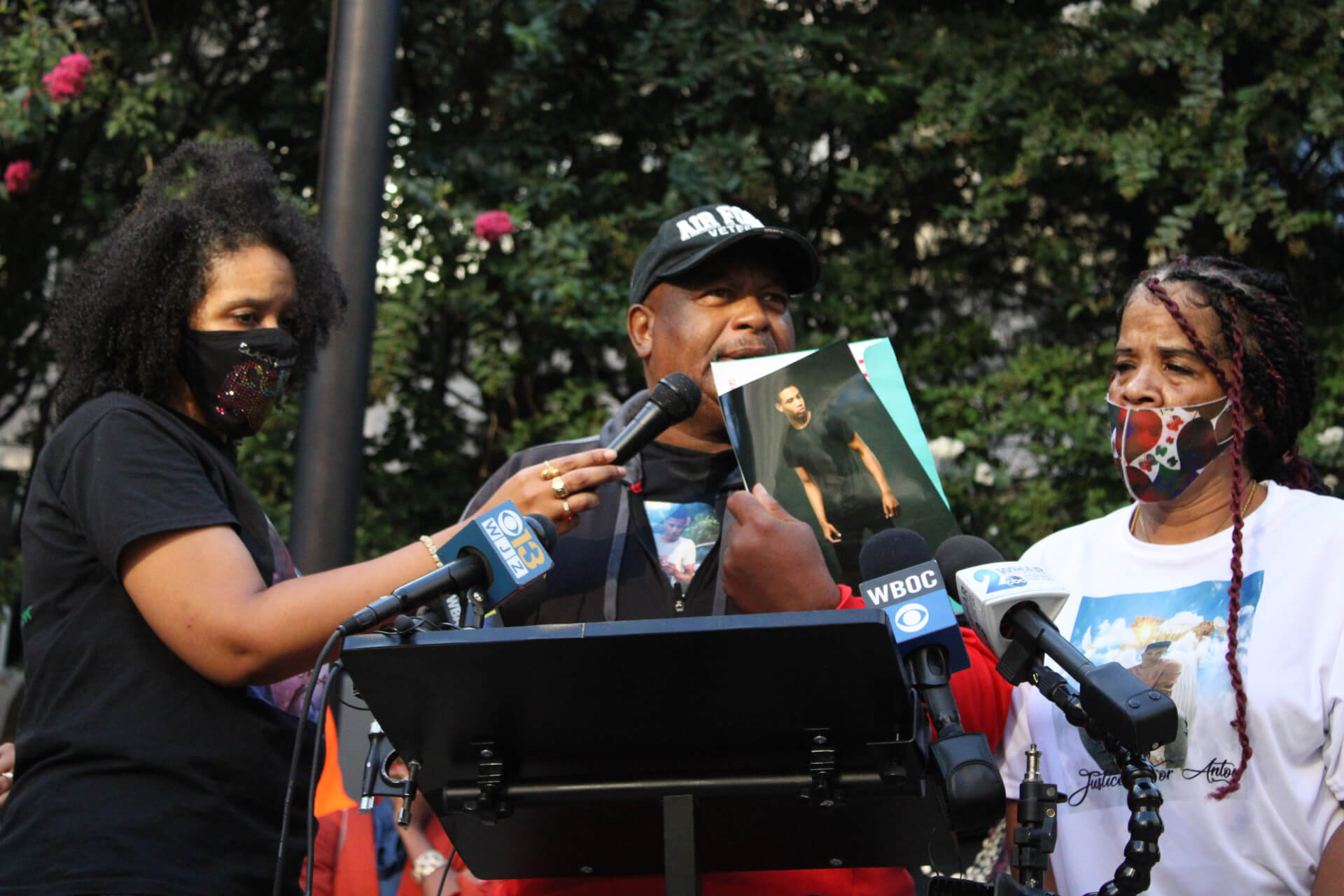Opinion: To protect Black lives, Maryland’s new leaders must act swiftly to expose and prevent police-involved deaths

By Sonia Kumar
The writer is a senior staff attorney at the ACLU of Maryland.
The brutal killing of Tyre Nichols is yet another example of police violence against Black people, and again raises the familiar question: What will it take to end it? In Maryland, let’s start with the truth.
Five years ago, Eastern Shore teenager Anton Black died when police chased, tased, and pinned him facedown for six minutes. Led by then-Chief David Fowler, Maryland medical examiners ruled his death an “accident,” claiming Anton died of “natural” causes due to a heart condition, alleged drug use, and bipolar disorder. Despite video showing officers tasing, tackling and forcibly restraining Anton, the autopsy claimed “no evidence” linked police restraint to his death. Anton’s family and community were stunned.
Two years later Dr. Fowler would infamously testify that George Floyd was killed by something other than Derek Chauvin’s knee on his neck: Car exhaust, maybe? A heart condition? Drugs? Anything but police violence.
Fowler’s contentions in Anton’s case were equally implausible. Bipolar disorder doesn’t cause death. Drug screens found no drugs in Anton’s system. And a Johns Hopkins cardiologist explained Anton’s “heart condition” was common and benign. Experts concluded Anton died from asphyxia – just like Mr. Floyd. Anton’s death should have been ruled a “homicide” – a death caused by another’s intentional actions.
Instead, using smoke and mirrors, the ME severed the causal link between police conduct and Anton’s death, leading police departments to see no need for reform, and prosecutors to find no crime. Without a homicide ruling, there’s no impetus for change. The cycle of preventable police killings persists.
Fowler’s tragic legacy is this: Two decades of official rulings that heart conditions, drugs, hot temperatures, or disabilities, rather than police force, killed people in custody – the outcry of families and survivors notwithstanding.
In 2007, police in Frederick accosted Jarrel Gray, a 20-year-old Black man who was deaf in one ear, repeatedly tasing him, causing him to fall unresponsive to the ground. Officials said the manner of death was “undetermined,” and the cause “sudden death associated with restraint and alcohol intoxication,” and “natural anatomic deviations.” Taser use went unmentioned.
In 2010, Kareem Ali, a 65-year-old Black Montgomery County man, was struck by baton, pepper sprayed, tased and restrained. Again, officials claimed his cause of death was “undetermined,” citing, among other things, schizophrenia, heart enlargement, and obesity.
In 2013, Montgomery County police tased Anthony Howard, a 51-year-old Black man, nine times over 37 seconds, even after he fell to the ground, later claiming that Mr. Howard charged them. Bystander video proved this false. Cause of death was “undetermined,” the manner “Delirium Associated With Cocaine Use During Police Restraint.”
Also in 2013, Tyrone West, a 44-year-old Black man, died during a traffic stop after Baltimore police maced, repeatedly struck, and restrained him in a prone position, limiting his breathing. Officials claimed possible dehydration, hot weather and cardiac abnormalities made cause of death “undetermined.”
Clearly, Maryland’s Medical Examiner has avoided recognizing the causal relationship between police use of force and death, disregarding or misrepresenting facts, medical evidence and professional principles to mask how people die in police encounters. The truth has been concealed in medical jargon and manufactured uncertainty based on remote possibilities.
Dr. Fowler’s testimony in Mr. Floyd’s case prompted Maryland’s outgoing governor and attorney general to commission a study of custodial deaths on his watch. The data shows officials almost never classified such deaths as homicides, absent a gunshot wound. Rather, in 88% of cases, medical examiners concluded the death was not a homicide, no matter the level of police force. Racial disparities were stark: MEs were nearly three times as likely to classify custodial deaths of white victims as homicide.
Last fall, the audit team urged a detailed reexamination of 100 custodial deaths, which could take years. In the meantime, despite widespread concern, no public effort has been made to address how such cases are handled.
Maryland’s new governor, Wes Moore, and attorney general, Anthony Brown, should act swiftly to correct the state’s profound failures. Three things could be done right now.
First, adopt a clear procedure for these autopsy investigations, identifying relevant standards, review of best available evidence, and bias mitigation reviews. Above all, there should be no hesitation in classifying deaths involving law enforcement as homicide, just like any other death. This policy should apply to all people in custody, whether police custody or detention.
Second, the medical examiner should provide contemporaneous notice to loved ones of their right to appeal non-homicide determinations.
Third, the office should freely grant waivers of the existing 60-day timeline for appeals, given the difficulty and expense of reconstructing what happened and evaluating medical findings. Other state offices grant such waivers all the time.
Nothing can change the past. But, with the right actions, we can radically change the future.




 Creative Commons Attribution
Creative Commons Attribution